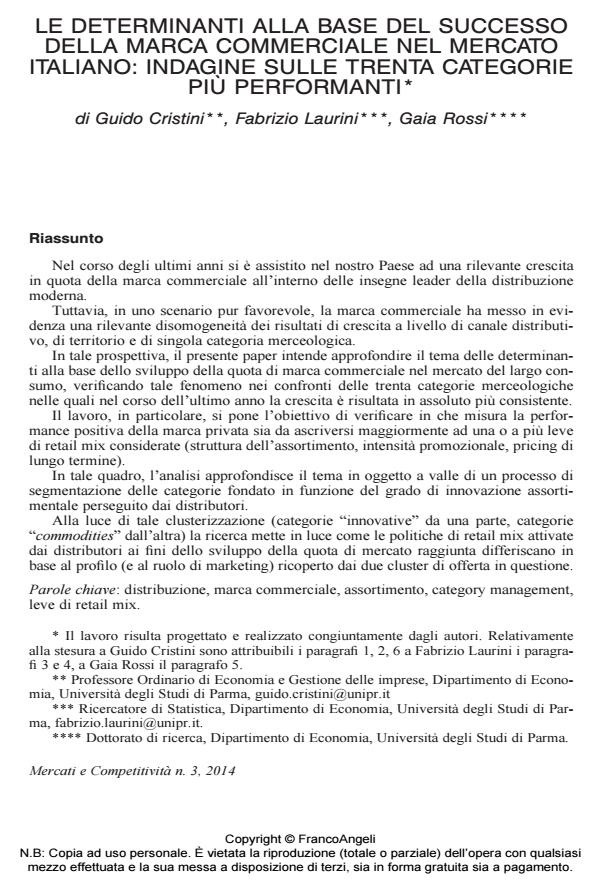The determinants explaining the high performance of the store brand in the Italian retail market: survey on the thirty categories with the best result
Journal title MERCATI E COMPETITIVITÀ
Author/s Guido Cristini, Fabrizio Laurini, Gaia Rossi
Publishing Year 2014 Issue 2014/3
Language Italian Pages 22 P. 163-184 File size 242 KB
DOI 10.3280/MC2014-003009
DOI is like a bar code for intellectual property: to have more infomation
click here
Below, you can see the article first page
If you want to buy this article in PDF format, you can do it, following the instructions to buy download credits

FrancoAngeli is member of Publishers International Linking Association, Inc (PILA), a not-for-profit association which run the CrossRef service enabling links to and from online scholarly content.
During the last year Italy was subject to a significant growth of the store brands within the most important groups of modern distribution. However, in this positive scenario, the private label showed a distinctive performance in terms of market share achieved at level of store format, geographical area or a single category. In this perspective, this paper analyzes the issue of the determinants to the base of the growth of store brands share. Categories were chosen according to their strong performances, in particular where store brands was more consistent. The paper aim at verifying whether the reasons of this positive result rely on management of the retail mix lever (composition of assortment, price promotion, the price positioning). In this contest, the paper examines the issue downstream of process of segmentation of the categories considered on the basis of level of innovation of the assortment realized by distributors. To the light of this segmentation (innovative categories vs "commodities" categories) the research shows that the successful retail mix policies differ to the basis of the profile and the marketing’s role played from the two cluster considered.
Keywords: Retail, Store Brands, Assortment, Category management, Retail mix policy
- Growth factors of store brands in different store formats in Italy Guido Cristini, Fabrizio Laurini, in The International Review of Retail, Distribution and Consumer Research /2017 pp.109
DOI: 10.1080/09593969.2016.1267658
Guido Cristini, Fabrizio Laurini, Gaia Rossi, Le determinanti alla base del successo della marca commerciale nel mercato italiano: indagine sulle trenta categorie più performanti in "MERCATI E COMPETITIVITÀ" 3/2014, pp 163-184, DOI: 10.3280/MC2014-003009